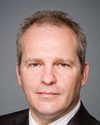Thank you, Mr. Chair.
Thank you, Mr. Sporer, for taking the time to be with us today.
Let me begin by saying that I fully agree with your comments about the way the commercial halibut fishery is managed on B.C.'s coast. I was involved in the decision, back in the day, to implement the integrated groundfish fishery. I can tell you from this side that it was a pretty difficult decision, and I imagine it was probably at least as difficult or more difficult for the commercial sector to accept what was really being created by them but in a very cooperative and collaborative way. I really think it is one of the best in the world, so congratulations to all who have been part of that.
I think it hasn't been without its difficulties as well, but I don't want to talk about those today.
In your presentation, you mentioned the numbers. Just to clarify, you say a small number of British Columbians participate, and I suppose percentage-wise one might view it that way, but it's not an insignificant number. For recreational fishing, in British Columbia and around the country as well, if there are, say, between 300,000 and 400,000 British Columbians who fish recreationally, that really isn't insignificant.
Just to clarify on the halibut, you've given some numbers but I think your numbers are about recreational fishing for all species, not just for halibut. I think it is pretty clear that the interest in recreational fishing for halibut has actually increased over the years. Is that accurate or not?




